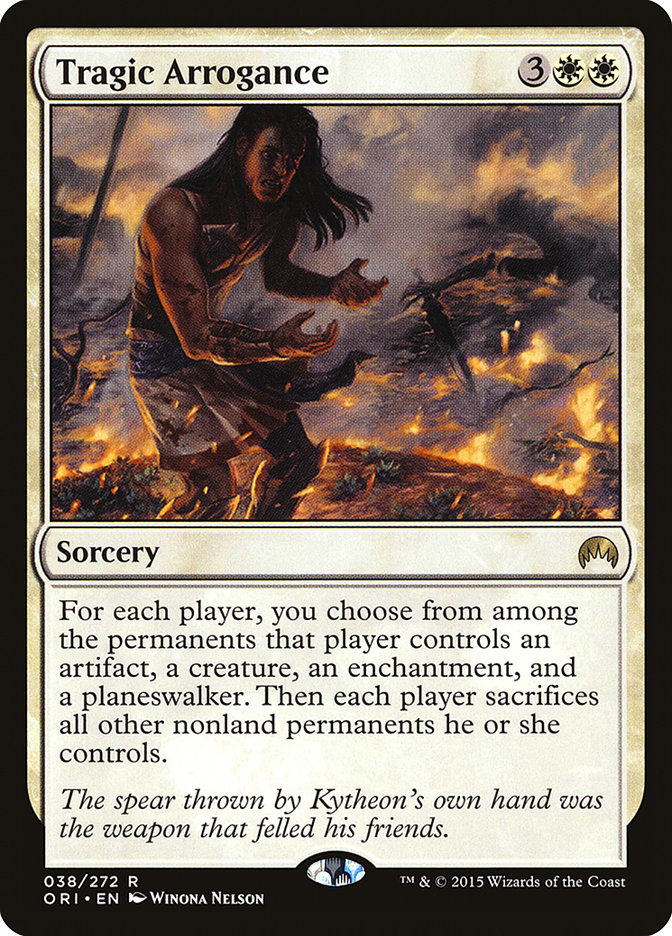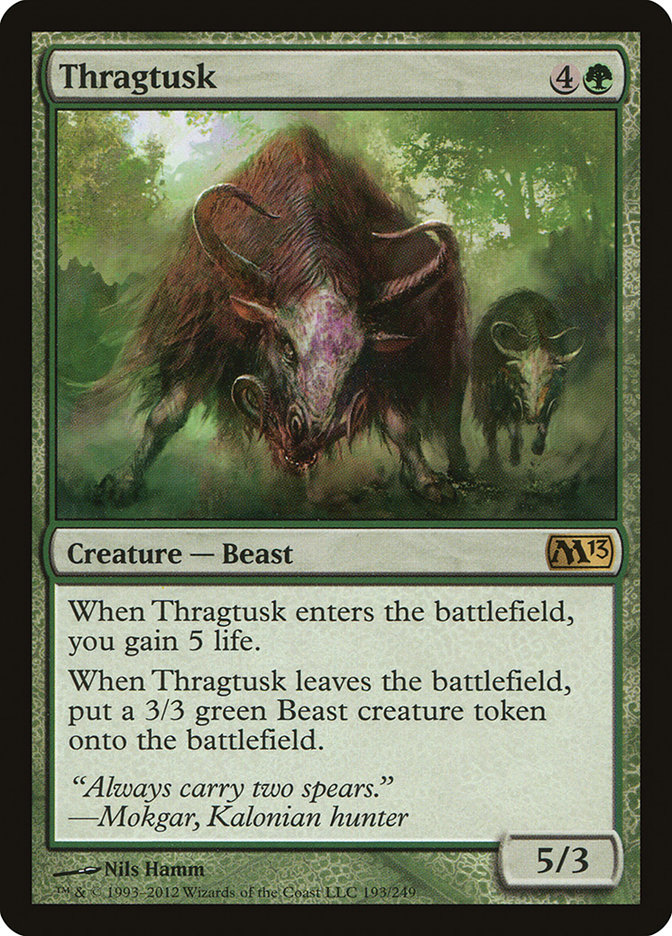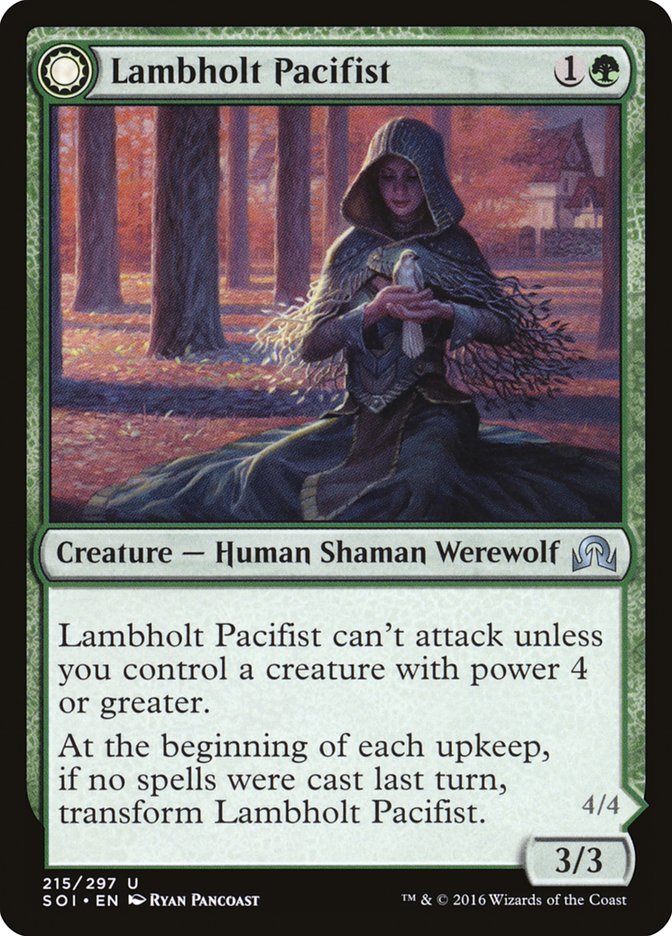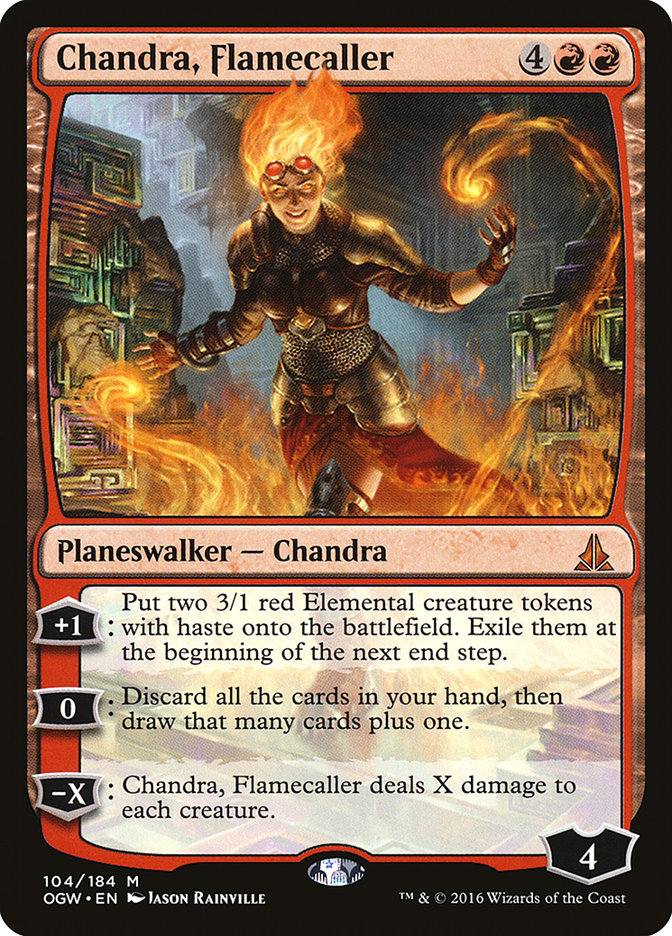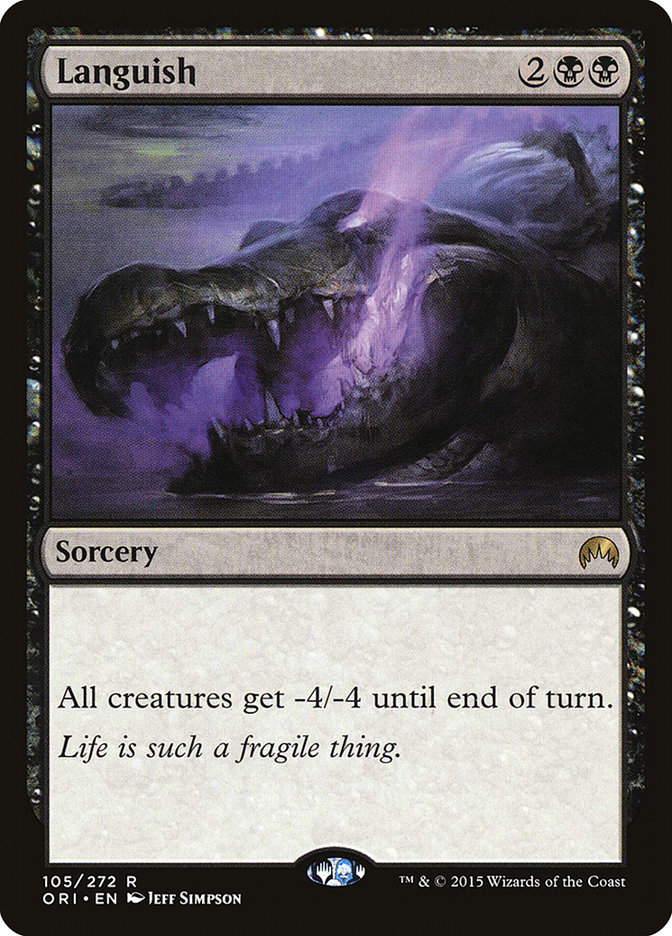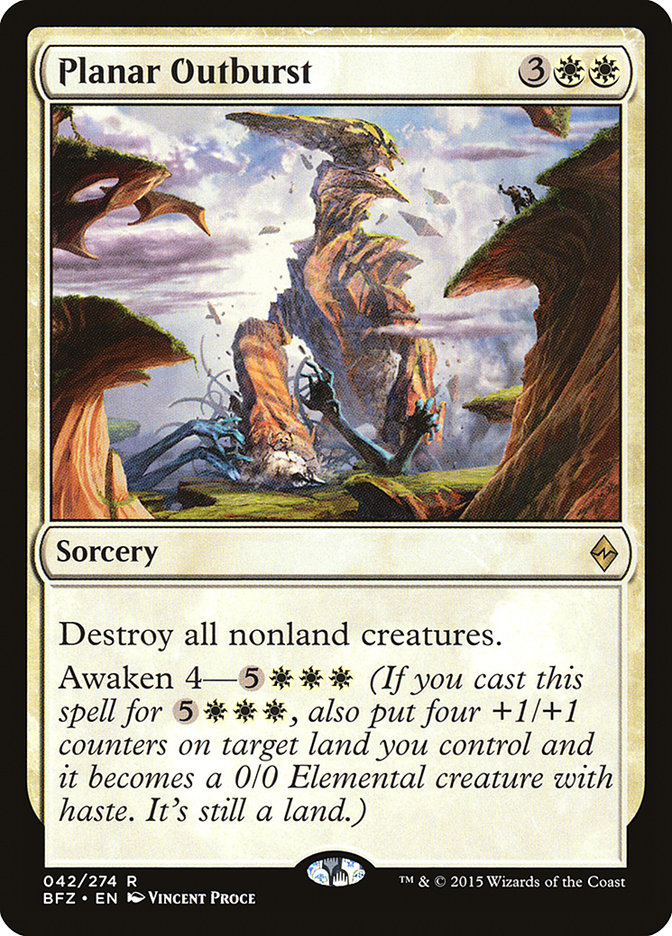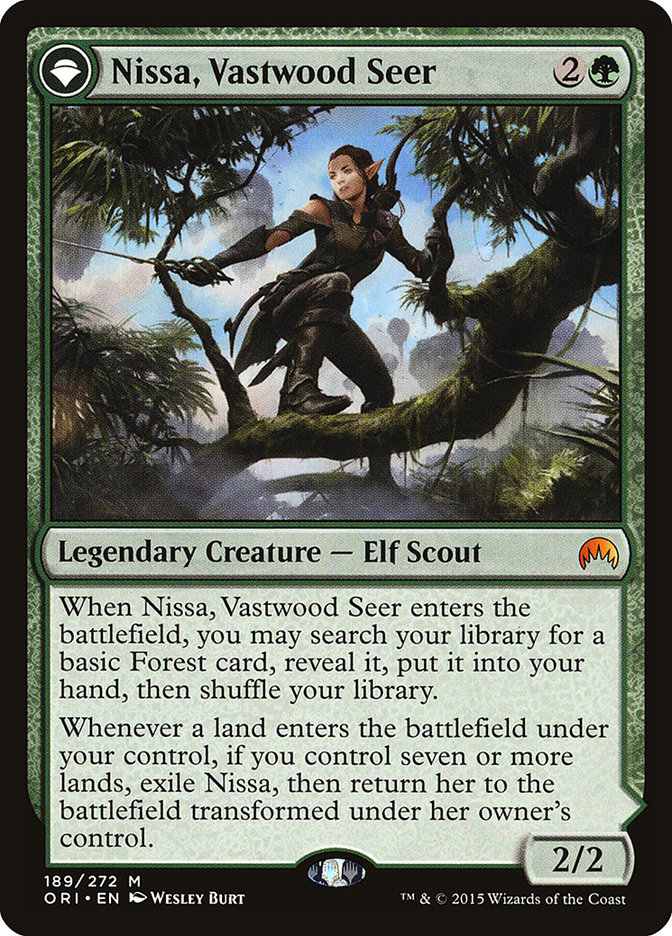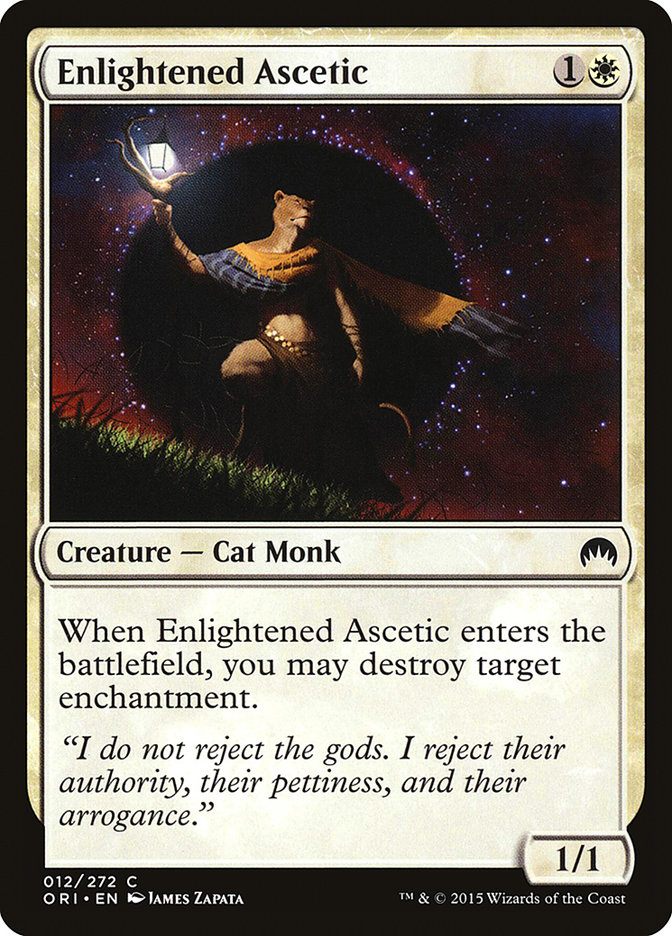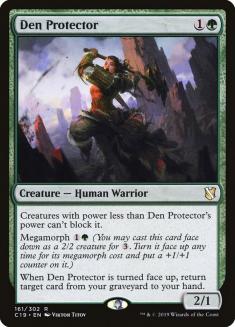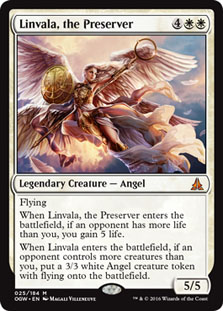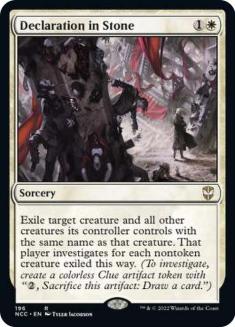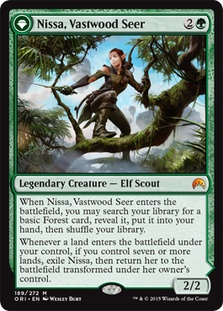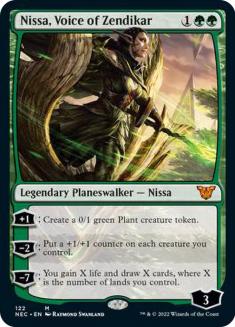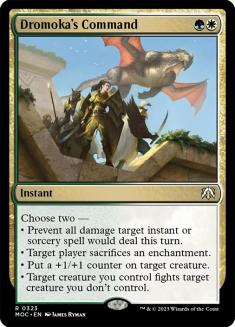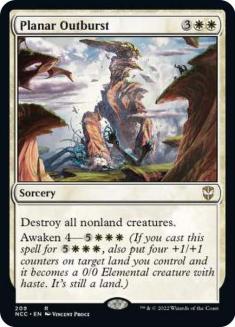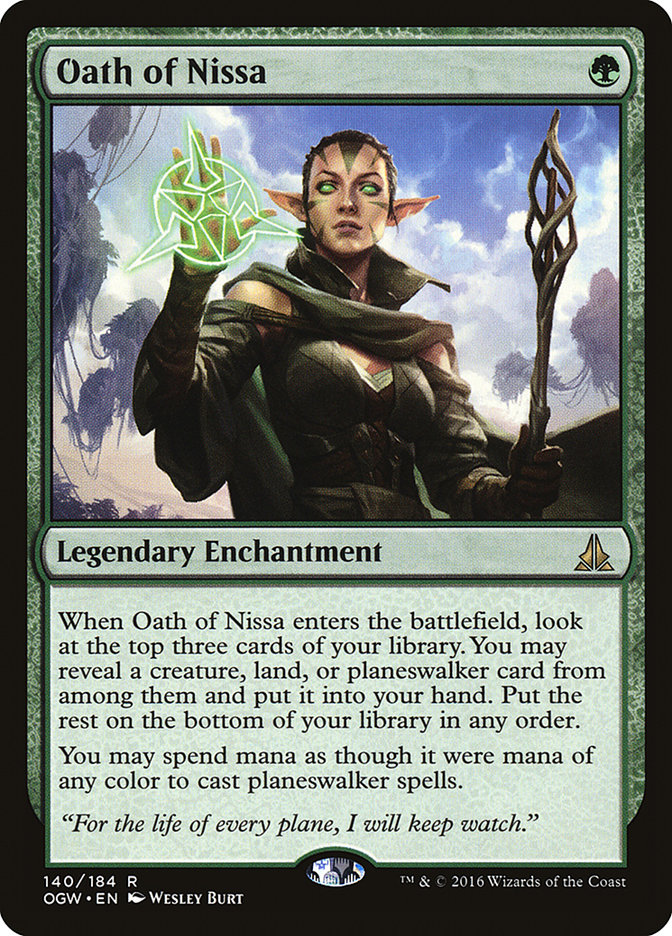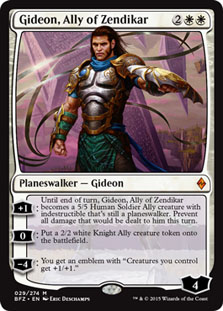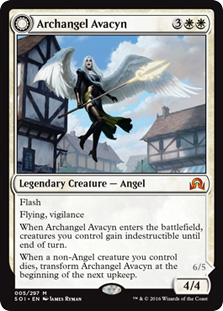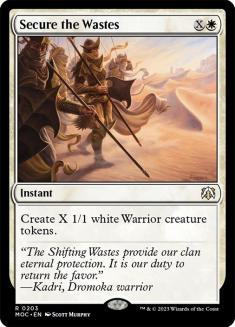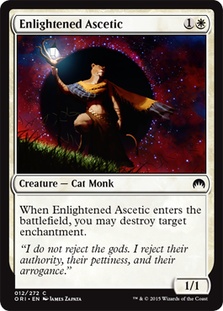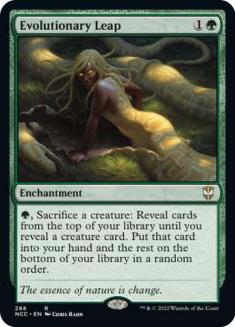Last weekend, I set a record as the only player to go 15-0 in the Swiss rounds of an SCG Open at #SCGATL. With two byes, a great deck, some fancy sideboard plans, and a lot of luck, I finished in third place. Unfortunately, I couldn’t complete the perfect 18-0, but I tried. Tom Ross had other ideas.
But how’d that happen? How did mopey G/W Tokens go 16-1 at all?
Here’s the thing: I had a secret. Although I didn’t know it at the time, I broke the format.
More on that later.
The Best Way to Gain an Edge
In Standard specifically, most players are on roughly equal footing. Secret technology is both infrequent and fleeting. The only lasting way to gain an edge is in sideboarding.
At this point, everyone has tested their decks enough to know what’s going on, especially against G/W Tokens. After winning both Grand Prix the week before, G/W Tokens certainly has a target on its head. Control decks with sweepers and ways to beat planeswalkers are the obvious way to fight G/W Tokens, but the mirrors seemed fairly random.
You could fight a careless opponent with Tragic Arrogance, but most of the game wins came down to who had Nissa into Gideon or who was on the play. There’s a better way, and that involves using your sideboard (and maindeck!) to facilitate a plan that goes over the top of your opponent’s powerful planeswalkers.
In Standard, that’s about the only thing you can do to gain an information advantage: flip the script and invalidate their plan against you.
Degrees of Midrange
In order to understand my thought process, I recommend checking out my last article on G/W Tokens.
After playing against some mirrors and various Collected Company decks, it was clear to me that becoming more controlling and slightly “bigger” was the best way to win those matchups. In midrange battles, going slightly bigger is the key to success. No one wants to show up with Wild Mongrel when everyone has Thragtusk, and you shouldn’t want Thragtusk if everyone has Primeval Titan.
Notching them on power level is the best way to succeed, and I continually did that while my opponents failed to adjust.
Lambholt Pacifist has been cropping up more and more in maindecks, and it’s the exact type of card that, while good, is very easy to go over the top of. It’s not a powerful topdeck and does very little if you can’t capitalize on an early advantage. Eventually you’ll start cycling Hangarback Walkers through Evolutionary Leap, transform Archangel Avacyn whenever you want to, and recycle removal with Den Protector.
You bury them.
What G/W Tokens Really Is
It’s a common misconception that G/W Tokens is an aggressive deck. There are certainly matchups, such as against any sort of ramp deck, where you want to be aggressive (and you do have those capabilities), but most of the time, that’s not your best shot. Blowing a Secure the Wastes or some Nissa, Voice of Zendikar loyalty to try to kill your opponent is ill-advised. Be patient, continue accruing advantage, and eventually you’ll bury them.
Obviously there are some spots where making a creature with four toughness is better against Chandra, Flamecaller, or five toughness when you’re facing Languish. But that’s kind of the general idea: G/W Tokens is flexible. With some creativity, you can make G/W Tokens become whatever you want, week to week or match to match.
Sound familiar?
The Deck
Creatures (14)
Planeswalkers (8)
Lands (26)
Spells (12)

My Changes
With Tragic Arrogance occupying sideboard space in G/W Tokens for quite some time, making the full swap to Planar Outburst was quite the shock for numerous people. In a deck where you could potentially keep Hangarback Walker plus another creature, an animated Gideon, Ally of Zendikar and Nissa, Voice of Zendikar, or keep Archangel Avacyn and force the transformation by sacrificing another creature, why suddenly move away from that?
The short version is that I was sick of leaving my opponent with something powerful. Against a deck like Bant Rite, I frequently encountered battlefield states where my opponent’s only creatures would be Eldrazi Displacer, Duskwatch Recruiter, and Tireless Tracker. Each of those creatures is a potent threat, and I always want to be able to remove everything. If you don’t remove each and every engine they play, they will eventually overwhelm you.
I also “kicked” Planar Outburst twice in the tournament (although I thought it was awaken 3, not 4!), so there’s that.
When you side into a more controlling deck, you typically have a higher mana curve. I’m frontloading an extra land in the maindeck, but I still want to ensure I hit my land drops. If I sideboard in a pile of spot removal and sweepers, Oath of Nissa is going to have trouble missing, and that’s something I wanted to avoid completely by siding it out. However, with Oath of Nissa gone, I was down a significant number of cards that helped me find lands.
In short, I wanted some sort of Divination effect to bridge the gap between my early spot removal and my heavy top end. W/B Control has access to Read the Bones, but we have no such luxury. Nissa’s Pilgrimage was considered, but Nissa, Vastwood Seer was ultimately deemed the superior option.
First of all, the body has numerous uses, including chump blocking, being sacrificed to Evolutionary Leap (or found via Evolutionary Leap), and attacking planeswalkers. Second, if Nissa, Vastwood Seer survives until turn 7, she turns into a one-way Howling Mine.
Throughout the entire tournament, Nissa, Vastwood Seer was by far my best card. Without her in the sideboard, I wouldn’t have done nearly as well as I did.
If Nissa, Vastwood Seer was my best card, then Linvala, the Preserver was my second-best.
In the past, I had some mediocre experiences with Linvala, the Preserver, but she overperformed this weekend. Standard is in that sweet spot where turn 6 rolls around and Linvala is able to use both triggers consistently.
Going forward, we’ll probably see Linvala, the Preserver popping up in maindecks where appropriate.
This card was mostly a hedge and likely a mistake.
I was somewhat worried about Rattlechains and company, so I considered playing something like Aerial Volley. Instead, I went to Twitter and discussed my options with many helpful people, and settled on sideboarding very little for those decks. However, Fevered Visions still scared me, as did other random enchantments like Virulent Plague, Cryptolith Rite, Jace’s Sanctum, and Always Watching.
Not knowing what to expect, I filled out my sideboard with an Enlightened Ascetic. I sided it in a couple of times, never drew it, and never explicitly needed it. Dromoka’s Command does insulate you from that stuff to a certain degree, but there are also matchups where you want a Disenchant but don’t want to keep in Dromoka’s Command.
Pyromancer’s Goggles was another very small concern, but since it’s mostly fallen off the radar, I didn’t feel the need to play a Conclave Naturalists instead. If you do want a Disenchant, I recommend keeping it a creature for Evolutionary Leap, but Angelic Purge is a fine option as well and is typically better against decks with Virulent Plague.
Sideboarding Guide
I’ll start with the standard warning: These sideboard guides are by no means definitive and should be altered based on your opponent’s specific decklist, their play-style, and how they sideboard against you.
For example, if an opponent is very skilled and plays Bant Humans precisely and aggressively, they aren’t going to give you any additional time. You can’t afford to miss a land drop and you can’t sideboard into too clunky of a deck. Things like Evolutionary Leap are great in long games, but if they’re actively trying to make that long game never happen, you need to switch up your style.
Sideboard against the player and against their strategy, and less overall against their archetype. This guide should be an outline and isn’t meant to be set in stone.
G/W Tokens
In (on the draw):
Out:
This is probably my most controversial sideboard plan.
Cutting the Dromoka’s Commands and some of the planeswalkers is counter-intuitive to what G/W Tokens normally wants to be doing, at least on the surface. With a plan of going bigger, those are by far the weakest cards in the deck, and therefore the ones that deserve to get the axe.
Other cards that could potentially get the axe are a Gideon, Ally of Zendikar or Forest on the draw. If you’re on the play, keeping some Dromoka’s Commands or copies of Nissa, Voice of Zendikar is completely reasonable.
Dromoka’s Command can fend off their two-drop, but you never really want to use Declaration in Stone on turn 2. It’s also an instant, which is relevant against opposing Archangel Avacyns. If they have Evolutionary Leap, the value of Dromoka’s Command increases as well (although they will likely have Oath of Nissa to defend).
When you’re on the play, it’s not uncommon to have games where you can simply protect Nissa, Voice of Zendikar until she can fire off the Sphinx’s Revelation ultimate. While not truly game-ending, I’ve only lost once after using it.
Linvala, the Preserver is so powerful at times that I could see a second one making its way into the mix as well, but I don’t think I want either when I’m on the play.
Bant Humans
In:
Out:
They may try to beat you down, but they may also try to adopt the control role with Tireless Tracker, Den Protector, and Negate. Chi Hoi Yim used Tragic Arrogance against me to good effect in the quarterfinals. Shift your sideboarding accordingly.
When you sideboard in a bunch of spells, Oath of Nissa has a much higher chance of whiffing. Dromoka’s Command isn’t very useful against G/W Tokens, especially in my post-sideboard configuration, but I won’t expect them to know that. Without Oath of Nissa, your Evolutionary Leaps are vulnerable, but it’s still very unlikely for them to get a two-for-one.
Sideboarding against Bant Rite is similar, but will vary based on their configuration.
W/B Control
In (on the draw):
Out:
The games are somewhat grindy, but they also typically end quickly once someone gets an advantage. I like shaving a land on the draw, but you probably need it on the play.
Siding in removal against a creatureless deck might seem silly, but they often have Kalitas, Traitor of Ghet (which shuts off your Hangarback Walker engine alongside Evolutionary Leap), and sometimes Thought-Knot Seer and Eldrazi Displacer. Allowing them to gain traction is about the only way to lose, since you will likely have more card advantage than they will.
Oddly enough, they are the beatdown post-sideboard.
Boss Humans
In:
Out:
I don’t think I sideboarded correctly against Tom Ross in the semifinals, but I’m unsure if it cost me. If it did, it was in Game 2, where I didn’t have the correct tools to buy time until I hit turn 5 for Planar Outburst.
Stasis Snare isn’t efficient and Declaration in Stone is going to give them extra ammo to work with, but you should be able to stabilize with Archangel Avacyn, Planar Outburst, or Linvala, the Preserver as long as you have time. Whether or not they have a good attack when facing down a Sylvan Advocate is a big deal, so I like having a ton of removal for Thalia’s Lieutenant and Town Gossipmonger. Without Tragic Arrogance, Silkwrap is a fine card to consider as well.
What to Do with Nissa, Voice of Zendikar
Many people will look at my sideboarding guide, realize that Nissa, Voice of Zendikar gets sideboarded out a lot, and wonder if that means she’s not worth playing. That’s understandable, but especially for this deck, that’s not the best way to think about it.
A proactive game plan is much stronger in Game 1, especially because Standard is (mostly) a format with a lot of variety. Sure, I could build my maindeck like a G/W Control deck, but that wouldn’t yield the same results. The ability to be proactive in Game 1 while shifting the focus in Game 2 and 3 (and ambushing your opponent) is the reason why I was so successful. If I were always a G/W Control deck, I’d be easy to sideboard against and easy to play against.
Instead, I’m a threat.
The Future of G/W Tokens
After I completed the 15-0 run, I walked over to Nick Miller and Cedric Phillips and asked for a green-related pun on Caw-Blade. At that point, I was convinced that G/W Tokens, and specifically my version, was the best version of the best deck in Standard. There have been very few times where I have felt completely unstoppable with my Constructed deck, but this was definitely one of those times.
It wasn’t just luck or variance or me having a good run. I legitimately broke it, at least for that one tournament.
Enjoy playing Craw-Blade. I know I will.


